13 Scary Episodes of Non-Horror TV Shows to Watch (and Rewatch), from ‘Barry’ to ‘Rick and Morty’


Halloween is the season for horror, of course. But October also means fall TV is in full swing, so it’s also the season for comedy, animation, drama, and more. TV shows of all kinds honor this spooky time of year, be it through explicit celebrations of the season or more abstract explorations of dark themes like existential dread, societal corruption, and the hubris of humanity.
More from IndieWire
Instead of just binging television horror this season — “Yellowjackets” is for winter! — why not truly frighten yourself with scary episodes of (generally) non-scary shows? “Black Mirror” regularly borders on nightmarish, but falls squarely into the sci-fi category, and still one episode haunts us like the scariest movies do. “Chernobyl” recounts real-world horror, which makes it a historical drama, but we’d argue that Episode 4 is a haunting on par with Mike Flanagan’s “Hill House.” Even comedies like “Boy Meets World” and “American Vandal” elicit true chills with some of their genre parodies, while action adventures like “The Boys” are always harrowing but only horrific on special occasions.
This season, we’re peppering our horror palate with selections outside genre limits, including all kinds of series to send shivers down your spine. Listed alphabetically, here are the IndieWire TV team’s top picks for terrifying episodes of excellent non-horror TV shows to revisit this October.
With editorial contributions from Steve Greene, Ben Travers, and Kristen Lopez.
1. “American Vandal” Season 2, Episode 1: “The Brownout”

Netflix
The fact that “American Vandal” didn’t have a neat and tidy genre tag made it part of the appeal and the reason why that appeal was so hard to summarize. (Both also apply to “Players,” the creative team’s follow-up and one of the most underrated TV series of 2022.) The first season of the show built out a true-crime template that used the style of a documentary series to dig into a high school mystery. Season 2 switched from parsing spray-painted dicks to figuring out the culprit behind a prank gone horribly wrong. Cafeteria sabotage leads to a school-wide case of students and staff members running for the restrooms, with disastrous results. Through well-placed cameras and somber retellings, “American Vandal” covers itself in poop jokes and really gets to how scary it is to lose control and not know what’s going on. If comedy really is tragedy plus time, that “footage” of people frantically racing to the nearest stall is the more unsettling part of that equation. —SG
2. “Atlanta” Season 2, Episode 6: “Teddy Perkins”
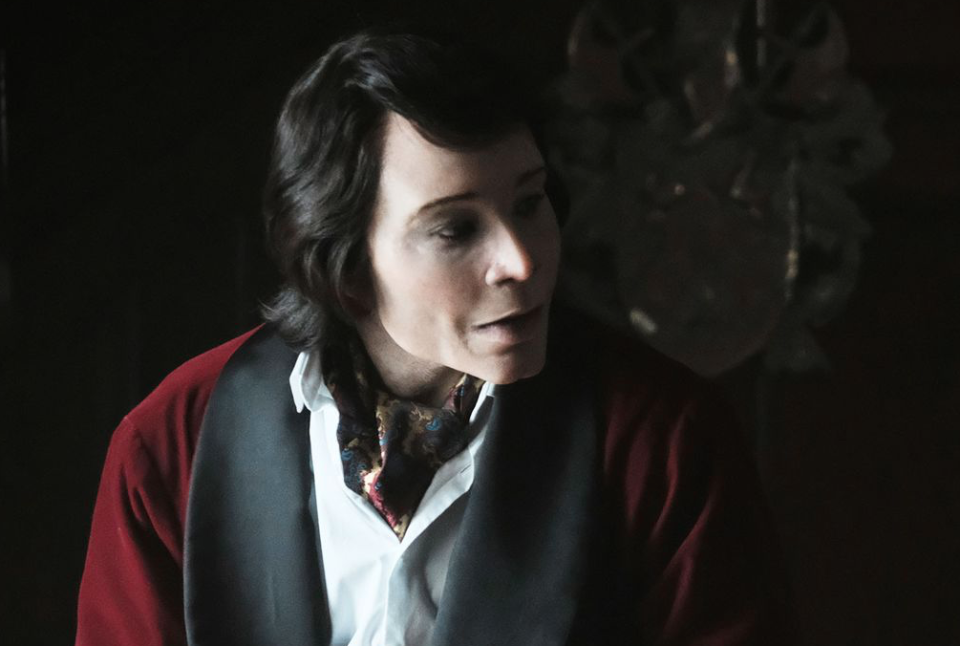
FX
“Atlanta” has always been a series that’s embraced bottle episodes, but none has lingered quite in the head like “Teddy Perkins.” With a set-up akin to “Get Out,” the episode follows Lakeith Stanfield’s Darius’ attempt to buy a piano from the titular character, played by Donald Glover in whiteface. And though the haunted house element of Darius going into a strange world is compelling, the episode works because of Glover’s performance. Everything about how Teddy moves, talks, or consumes giant ostrich eggs is built to hype the weirdness and fear. So by the time Teddy’s real intentions are revealed—and a person is found held captive in the basement—you’re like “Yep. Sounds right.” “Teddy Perkins” is an episode not just built to scare, but built for deconstruction as the episode seems to tackle everything from toxic masculinity to celebrity culture. It’s a horror episode with layers, that’ll leaves you shaking and thinking. —KL
3. “Barry” Season 2, Episode 5: “ronny/lily”
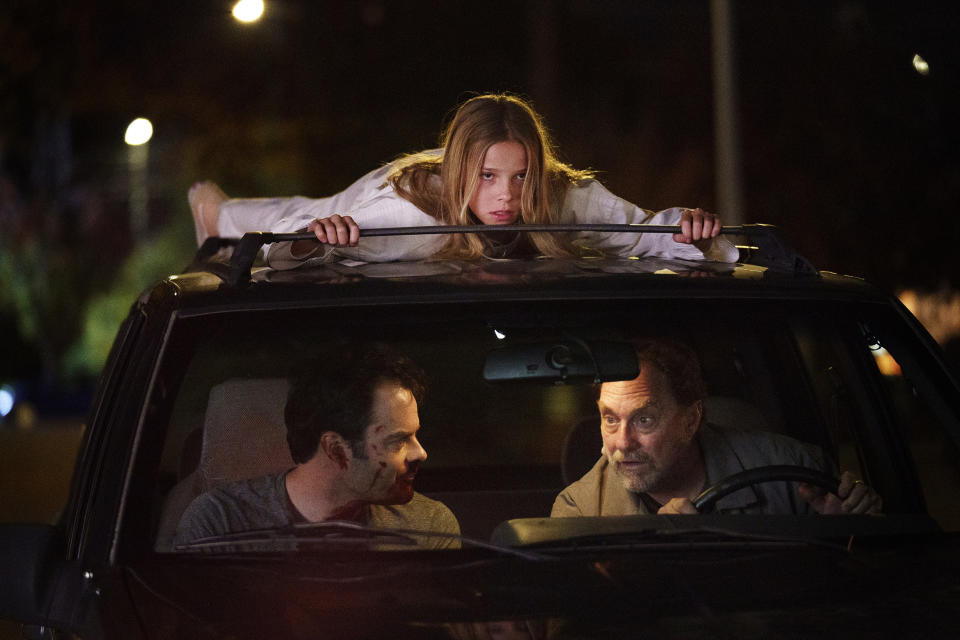
Aaron Epstein/HBO
The only certainty in every episode of “Barry” (so far) is that Barry himself (Bill Hader) will at least survive: which is why the high-octane stalking and violence of “ronny/lily” was so effective. Barry will make it through the unexpected face-off between him and a mixed martial arts master, but at what cost?
Ronny’s (Daniel Bernhardt) refusal to cooperate makes him both threat and target, and nothing prepares Barry or Fuches (Stephen Root) for the “feral mongoose” that is his daughter (Jessie Giacomazzi), who climbs trees, jumps on cars, and takes an actual bite out of Fuches’ cheek. It’s 30 minutes of relentless tension; Hader directs the heck out of the quiet moments as well as the action, orchestrated deftly by stunt coordinator Wade Allen. Best of all, the episode ends in classic “Barry” fashion, with a twist that sends everything in new directions and only resets the stakes and tension moving forward. —PK
4. “Black Mirror” Season 3, Episode 2: “Playtest”
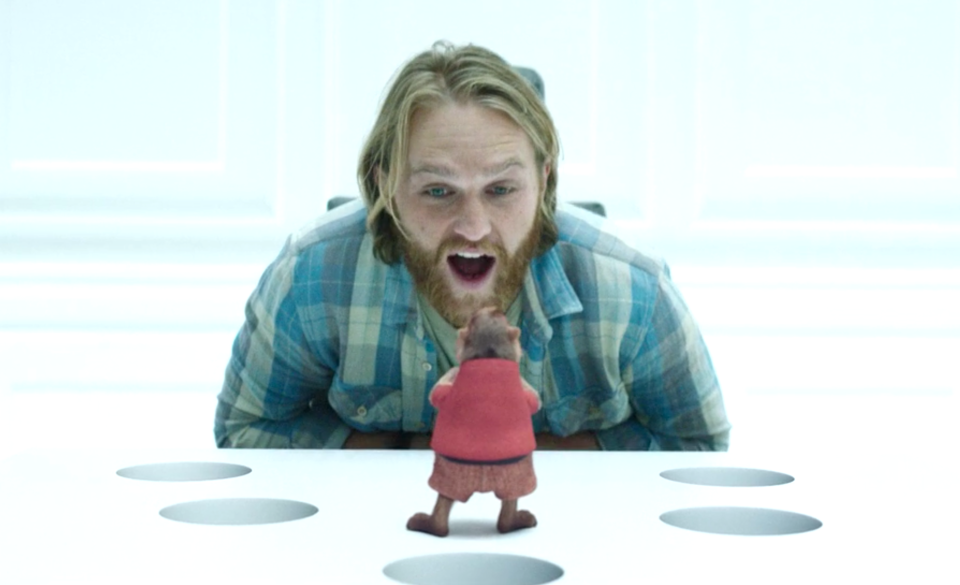
Netflix
In this top-tier Season 3 “Black Mirror” nightmare directed by Dan Trachtenberg (who was fresh off horror sci-fi gem “10 Cloverfield Lane” at the time), Wyatt Russell plays Cooper: an affable young man so emotionally lost and disconnected that he travels the world and generally ignores his grieving mother in the wake of his father’s death. When Cooper, in desperate need of money while away, is recruited to be part of a video game beta test, he jumps at the opportunity. Little does he know, the video game might be too much for him — or anyone — to handle.
There’s two components to this episode that make it utterly terrifying, albeit in different ways. On the one hand, it’s a haunted house horror movie, with Cooper visiting an AI video game world where his fears manifest literally. Trachtenberg is already great at horror so there’s a ton of creepy moments that feel ripped from the best haunted house movies (or the “Resident Evil” franchise). And Russell is such a likable actor, it’s hard not to root for him, even if his character seems to be callously indifferent to his family. What makes “Playtest” so terrifying is the emotional implications of Cooper’s actions in the end: It’s a searing and cynical character study that has a decent chance at leaving viewers crying and ready to call their loved ones. —KL
5. “BoJack Horseman” Season 6, Episode 15: “The View From Halfway Down”
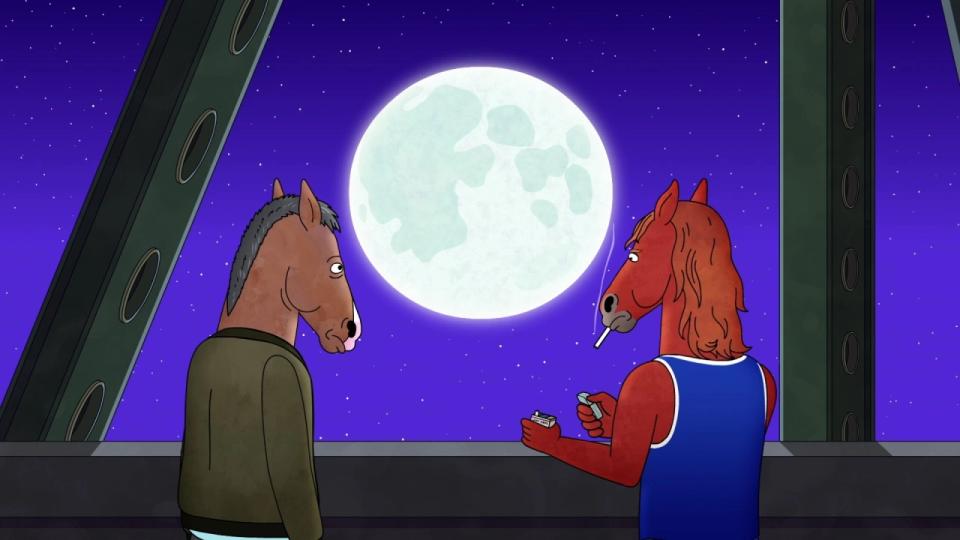
Courtesy of Netflix
The fear doesn’t set in right away. Perhaps a tingle of trepidation washes over you when BoJack (voiced by Will Arnett) arrives for a paradoxical dinner party, where the guests are known yet their existence here, together, remains inexplicable. There’s BoJack’s mother, Beatrice (Wendie Malick); her butler, Zack Braff (as himself); her brother (and BoJack’s uncle) Crackerjack (Lin-Manuel Miranda); his “Horsin’ Around” co-star Sarah Lynn (Kristen Schaal); and his old friend and series creator, Herb Kazazz (Stanley Tucci). The melange of memories gather around the table to play peculiar parlor games and put on a poignant talent show — and that’s when it hits. The fear. As BoJack’s amalgamation of his father and childhood hero Secretariat (also voiced by Arnett) reads a poem from the stage, the unspoken similarity binding all these figures together is brought to vivid existence: They’re all dead and BoJack may be, too.
The prior episode ended with a drunk and devastated BoJack rummaging through his old house, finding vodka in the freezer and pills in the cabinet. What came of his latest bender was left up in the air, but as the dream that makes up “The View From Halfway Down” lays itself bare, reality materializes, as well. BoJack is unconscious, face-down in his old pool, hovering somewhere between life and death. Like Secretariat before him, BoJack is realizing he may have made a mistake he can’t take back. He may not wake up. His view from halfway down may only continue spiraling into further darkness, as promised by his already passed dinner guests.
Episode 15, the penultimate entry in “BoJack Horseman,” doesn’t always hold together dramatically. You may guess what’s really going on long before the main character, and how the finale reverses “The View’s” ending — BoJack survives — still doesn’t sit right with some viewers. But as a warning and an assertion — that death may very well be the end, and our lives aren’t better served by pretending otherwise — the second-to-last half-hour of Netflix’s kaleidoscopic comedy is downright chilling. “But this is it,” Secretariat reads, “the deed is done, silence drowns the sound. Before I leaped, I should’ve seen, the view from halfway down.” —BT
6. “Boy Meets World” Season 5, Episode 17: “And Then There Was Shawn”

Courtesy of Buena Vista Pictures/Everett Collection
For the majority of its seven season run on television, “Boy Meets World” was a fun family sitcom about a group of teens trying to navigate high school, college, and adulthood. But in Season 5, the series made one of its most unique, audacious, and downright scary episodes with “And Then There Was Shawn.”
Inspired by the rise of ‘90s teen fare like “Scream” and “I Know What You Did Last Summer,” the episode sees Cory (Ben Savage) and his friends trapped in the detention session from hell, literally, with each of them being killed one by one. There are a slew of inventive deaths in this one, from a boy being stabbed with a pencil (“We’ll always remember he was this tall…”) to Jennifer Love Hewitt, playing a character named Jennifer Love Pfefferman, getting smushed under library books. But the episode wasn’t just content with slasher movie cliche — which resident horror expert, Shawn (Rider Strong) points out as the episode goes on — but one that also draws from older terrors. One of the most memorable moments in the episode involves a spooky murder song that plays on the school intercom that feels ripped from “The Shining.” —KL
7. “The Boys” Season 1, Episode 4: “The Female of the Species”
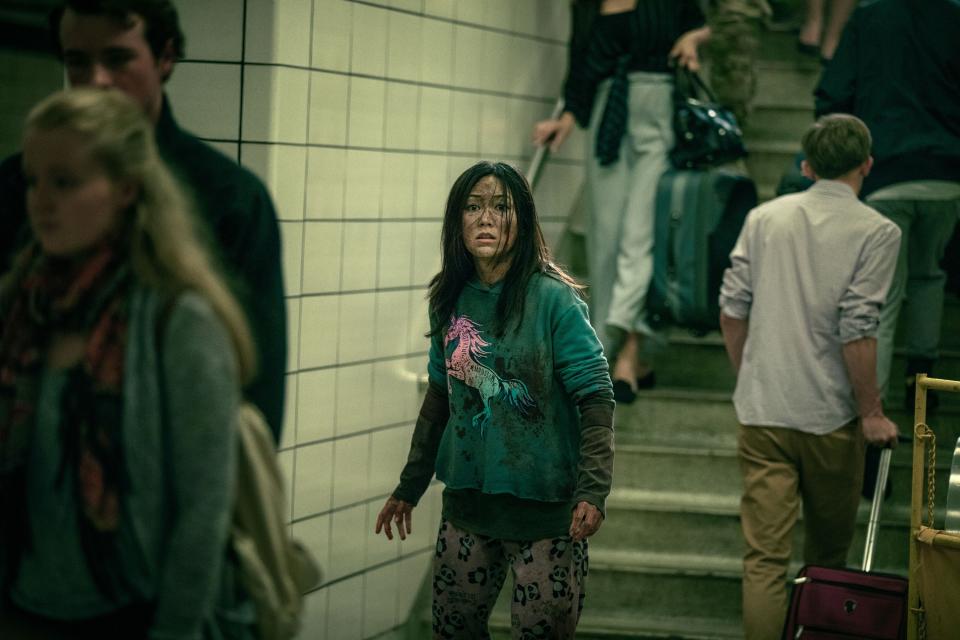
Courtesy of Jan Thijs/Prime Video/Everett Collection
Over three increasingly bombastic and bloody seasons, Eric Kripke’s “The Boys” has evolved into one of the most hyper-violent and bitingly cynical series around: if not when compared to all of television, then at least among the superhero subgenre typically dominated by the family-friendly fare of Marvel and D.C. From the unsafe sexual exploits of shape-shifting supes to some head-popping hysteria in a congressional hearing, Prime Video’s turbocharged satire has consistently upped the gore in its graphic action sequences but hasn’t been able to achieve scares quite as intense as “The Female of the Species” since Season 1.
The fifth rogue hero to join the titular protagonists’ vigilante squad, Karen Fukuhara’s Kimiko first appears as an untamed terror held captive in the basement of a noodle shop. Once freed by Frenchie (Tomer Capone), she unleashes hell on her captors: ripping at their flesh and breaking their bones in a torrent of pent-up aggression that could give Michael Myers a run for his money. Cornering the last one of her guards, Kimiko watches as he shoots himself rather than withstand her wrath. When she returns later to kill the matriarch of the gang, the resultant pile of pulp makes it clear why. Back when “The Boys” was still finding its footing, “The Female of the Species” hit like a knockout punch: not least of all because Kimiko’s terrifying introduction was compounded by Homelander’s infamously evil decision on Flight 37 creating the kind bait-and-switch for which the show’s drama is now known. —AF
8. “Chernobyl” Episode 4: “The Happiness of All Mankind”
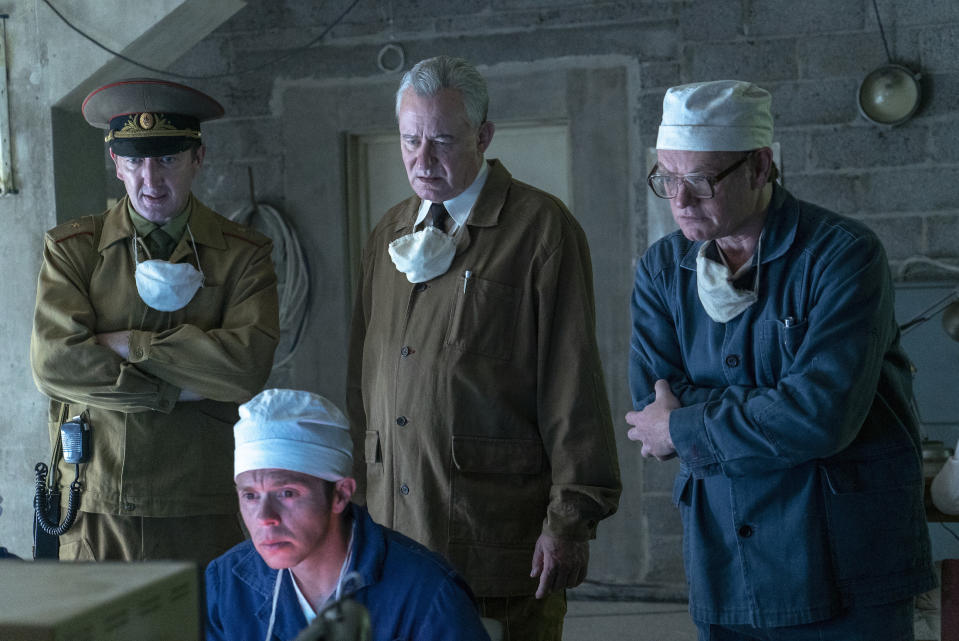
Liam Daniel/HBO
There’s no wrong answer to “Which ‘Chernobyl’ episode is most terrifying?” It mostly depends on what flavor of dread you prize most. The first chapter is a portrait of a crisis arriving in slow motion. Episode 2 features institutional denial and people sacrificed for the sake of ignorance. Then, an hour of consequences, complete with a tearful goodbye and a body transformed beyond recognition. The series closes with an ending that looks at who gets to determine what justice is and who gets to tell the story of historical wrongs. Any of those are laced with the kind of dread that almost goes beyond horror and into something more terrifying altogether.
Our pick here is the series’ fourth episode, told mostly from the perspective of the liquidators charged with going through the Pripyat countryside and killing every creature inside the “elimination zone” of the meltdown’s radiation range. It’s not only that their task is brutal (if you’ve seen it, you know what their hardest challenge is), it’s that they’re so far removed from the people in decision-making positions. They’re confronted with a brutal task and not really given a choice. And it’s not just them. “The Happiness of All Mankind” has the staggering, tense rooftop sequence, too. In real time, you see a team of workers trying to clear incredibly dangerous hazardous material from a rooftop. In all cases, the terror of “Chernobyl” comes from people facing forces so much bigger than they’re equipped to handle. —SG
9. “Game of Thrones” Season 5, Episode 8: “Hardhome”
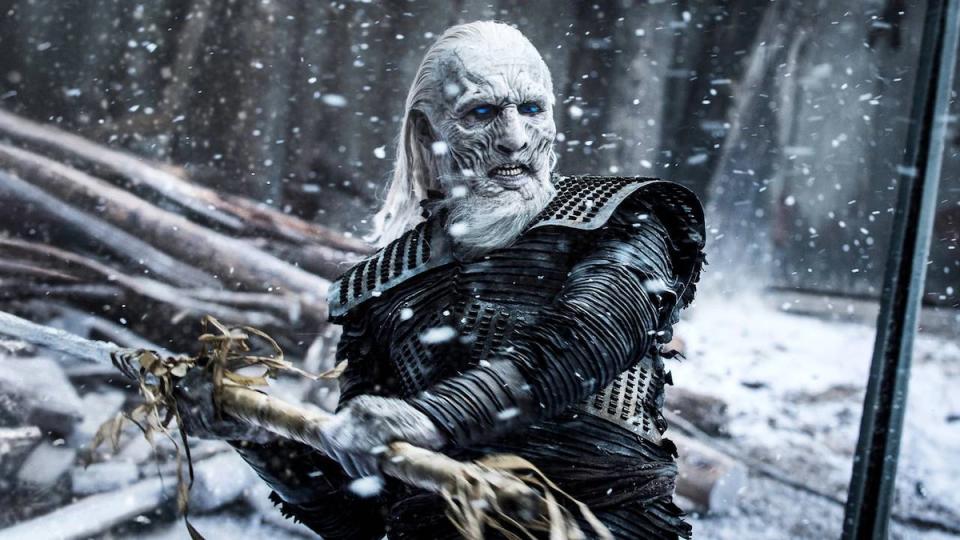
Courtesy of HBO
“Thrones” got plenty spooky during its eight seasons, but the number one source of classic horror movie scares was undoubtedly the White Walkers. Season 5’s pivotal battle — which doubled as meme catnip on social media — combined the best of the show’s world-building and action sequences with the zombie movie genre’s lifeblood (life force? You get it.) Jon (Kit Harington) and Tormund (Kristofer Hivju) lead their party to the wildling village of Hardhome, north of the wall, where they battle for their lives against the army of the dead.
Directed by Miguel Sapochnik, who went on to become one of the series’ most renowned directors and co-creator of “House of the Dragon,” the episode spends nearly half its runtime in one location: a month of filming that promised one of “Thrones”’ most unforgettable sequences. Over the course of half an hour, the wildling army is decimated, with more than one close call for Jon himself, whose greatest danger lies with his brothers back at the wall — alluded to in an earlier scene. At the end, he and a handful of survivors escape by boat, with nothing to do but watch aghast while the Night King raises every corpse as one of his own. —PK
10. “It’s Always Sunny in Philadelphia” Season 11, Episode 4: “Mac & Dennis Move to the Suburbs”
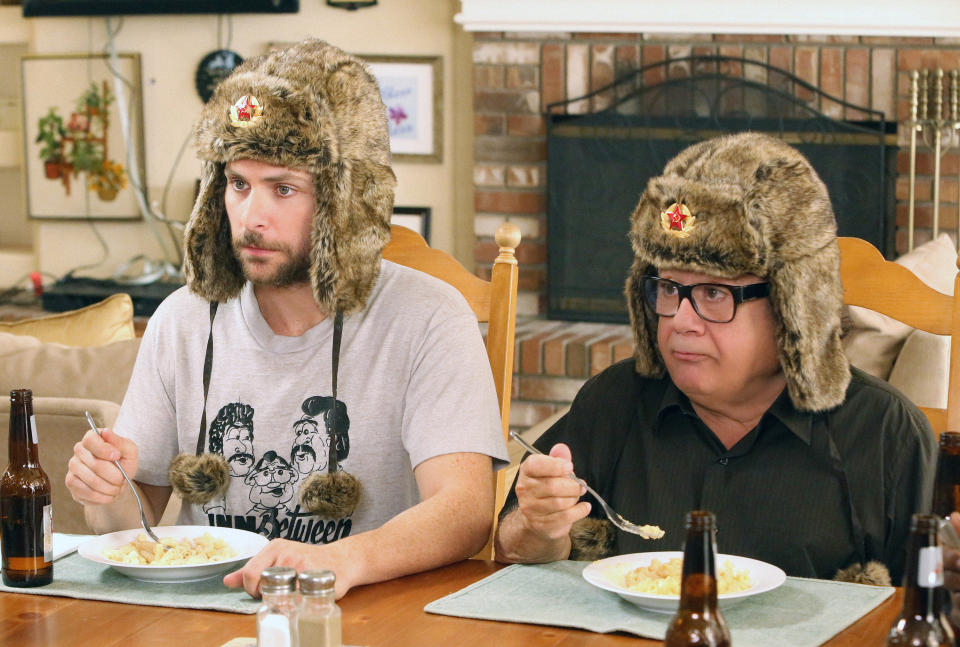
Courtesy of FX Networks/Everett Collection
Any episode where Dennis (Glenn Howerton) unveils a new layer of his darkest self qualifies as a terrifying episode of “It’s Always Sunny in Philadelphia.” Select scenes from “Making Dennis Reynolds a Murderer,” “The Gang Buys a Boat,” and, of course, “The D.E.N.N.I.S. System” could all make this list. Hell, the sum total of Dennis’ monstrosities could shift the entire series from the “comedy” genre into overt “horror.” “Mac & Dennis Move to the Suburbs” does revel in Dennis’ unsettling mental state — mainly, when he succumbs to road rage on the long commute to work — but the Season 11 classic is sinister beyond one of its titular stars.
Struggling to find a two-bedroom apartment in their price range, Mac (Rob McElhenney) and Dennis follow in the footsteps of so many financially strapped couples and make the move to suburbia. At first, they find their new digs peaceful, spacious, and relaxing. But when Frank (Danny DeVito) bets they won’t last a month away from the city, their foreign environs start closing in. There’s an unidentifiable chirping sound. Then the pool filter starts acting up. On edge from the sleepless nights, the roommates turn on each other: Dennis can’t fathom how Mac hasn’t set up the television or learned to cook anything but his “famous Mac and cheese,” while Mac feels cooped up when Dennis leaves for work each day and abandoned when he doesn’t return for longer and longer stretches.
To spoil the depths of depravity to which each man descends is to spoil a wicked run of black humor, but keep an eye out for what proves to be real after one of Dennis’ outbursts is revealed as mere fantasy. The grave is just the beginning. Part haunted house parody, part acknowledgement of a “city boy’s” worst fears, “Mac & Dennis Move to the Suburbs” should have everyone thinking twice about leaving their preferred home behind: it doesn’t always take much to be driven mad. —BT
11. “Legion” Season 3, Episode 4: “Chapter 23”
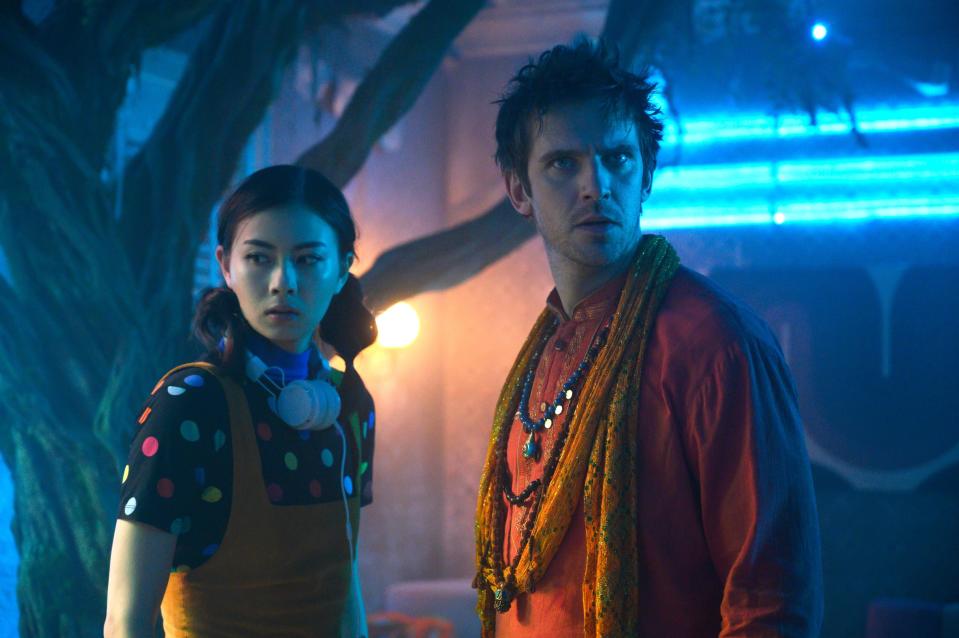
Courtesy of Suzanne Tenner/FX/Everett Collection
“Legion” never dared restrict itself to any one genre, sprinkling terror and trepidation across three seasons of psychological sci-fi (with the occasional musical number). Now in his villain era, David (Dan Stevens) attacks his former friends and the rest of the world through time itself. That premise imbues the entire episode with dread because anything could turn out to not be real, glitching and resetting without warning on David’s whims.
The episode isn’t complete without a terrifying monster lurking in the periphery; in this case, Time Eaters, who exist outside the constraints of linear time and attack everyone as reality keeps glitching. Because they mess with time, the episode often feels like stop-motion, moving from one still image to another as characters either evade or are beset upon by the demons, who look like flashes of smoke with glowing eyes. The demons come for everyone: For the Division 3 team, for Cary and Jai-Yi, for David himself, maintaining their fiendish façade by looking like flashes of smoke with glowing eyes. That’s arguably preferable to their true appearance, which is revealed by the end and will haunt viewers forever. —PK
12. “Lost” Season 3, Episode 20: “The Man Behind the Curtain”

Courtesy of ABC/Everett Collection
No show deserves — yet constantly escapes! — the horror label more than “Lost.” Right from the premiere’s mystery monster, abandoned distress signal, and mangled body stuck up in a tree, this was a show that not only included but promised jump scares, body horror, and just plain old creepy shit: perhaps epitomized in Season 3’s “The Man Behind the Curtain.” This episode has everything: Violence from the Others, Dharma Initiative foreshadowing, hallucinated dead parents, disembodied voices, the sonic fence, and genocide.
The flashback follows young Ben Linus (Sterling Martin Beaumon), who lives among the Dharma Initiative in the heyday of their scientific experiments and grows into the adult (Michael Emerson) who has them all murdered — including his father — on the instructions of ageless Richard Alpert (Nestor Carbonell) and a vision of Ben’s dead mother. The island storyline is no less harrowing, as the survivors of Flight 815 still don’t know the intentions of the freighter crew (not good!) and the Others plan to kidnap pregnant women from their camp. Locke (Terry O’Quinn) insists that adult take him to Jacob, who they of course visit in a remote, haunted cabin in the dead of night. Locke can’t see Jacob, but hears a disembodied voice growl “Help me” before the entire cabin starts to shake ominously. The episode ends with Ben showing Locke the skeletons of his Dharma genocide victims and then shooting Locke, leaving him with them.
“The Man Behind the Curtain” has everything emblematic of classic “Lost” scares: The violence and mystery of the Others (“the Hostiles” in flashbacks), the curiosity and doom of the Dharma Initiative, hallucinated dead loved ones, and casual murder. The cabin scene is full-tilt horror, with Jacob’s guttural voice (uncredited) now among the show’s extensive unanswered questions. The sonic fence around the barracks proves its potency in the flashbacks, amping up the unease surrounding Mikhail (Andrew Divoff), who survives it in the present and goes on to evade death repeatedly. —PK
13. “Rick & Morty” Season 1, Episode 6: “Rick Potion #9”
“People get turned all inside out” is where the argument for this episode could begin and end. Early in the first season of the show, “Rick & Morty” unleashed one of its most memorable cases of unintended consequences. When Morty tries to use a special serum to win the love of his crush, the biological aftermath renders the entire world a body horror nightmare. It’s also a classic “be careful what you wish for” scenario: Even before organs start squelching, the entire school clamoring for Morty’s love is almost a fate worse than being Cronenberg’d. (There’s also the idea that all of this happens via an airborne disease, a detail that’s only gotten more haunting in the years since.) Of course, that’s all before that episode-capping Mazzy Star needle drop. Existential dread has become a “Rick & Morty” calling card in the years since this installment aired, but it was the show’s first big gut punch. On top of the dimension-hopping questions of consciousness and flu raps — or maybe because of it — the monster parade hits even harder. —SG
Best of IndieWire
From 'Reality Bites' to 'Fatal Attraction,' Keep Track of All the Upcoming Film-to-TV Adaptations
7 New Netflix Shows in October 2022 — and the Best Reasons to Watch
Sign up for Indiewire's Newsletter. For the latest news, follow us on Facebook, Twitter, and Instagram.

 Yahoo News
Yahoo News 
